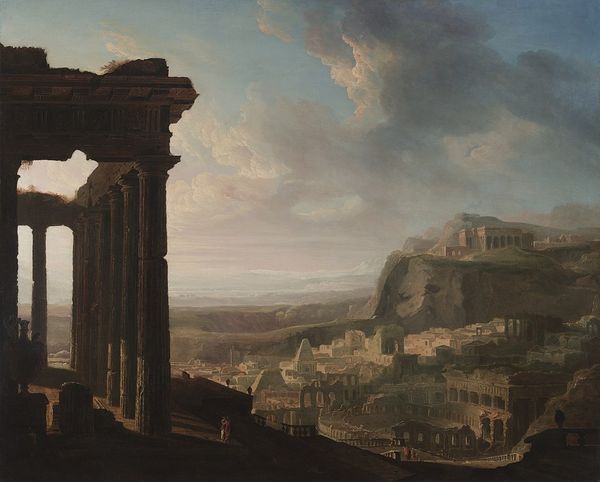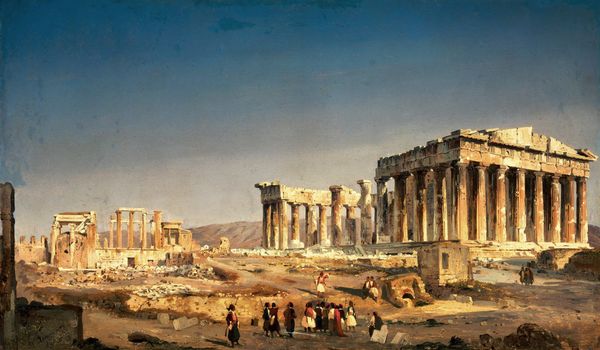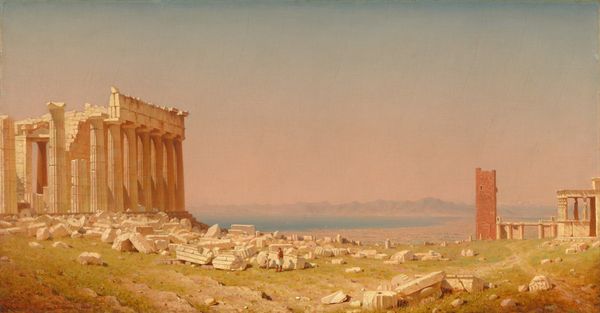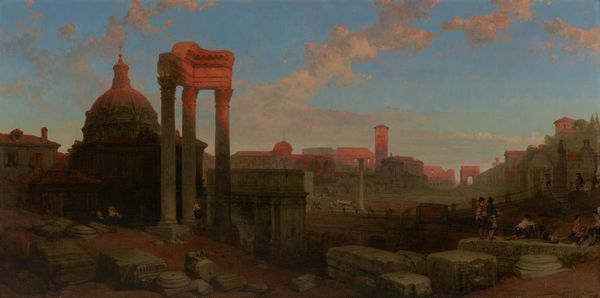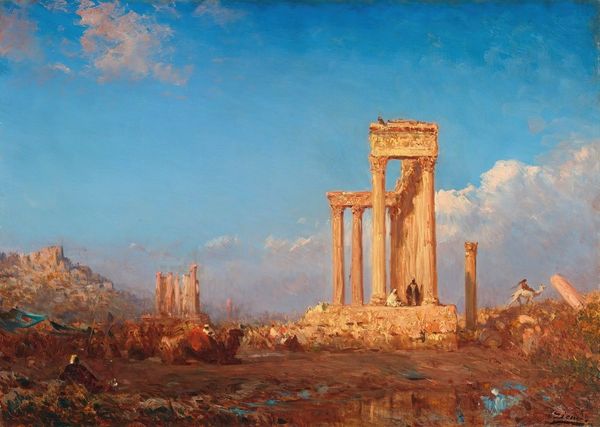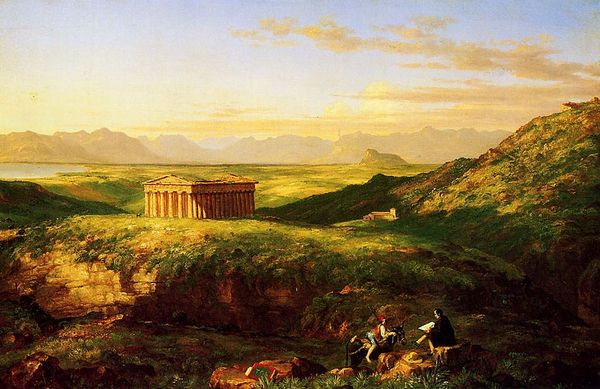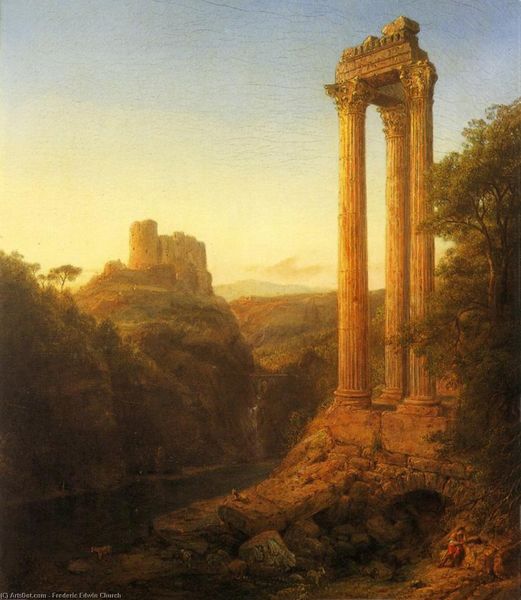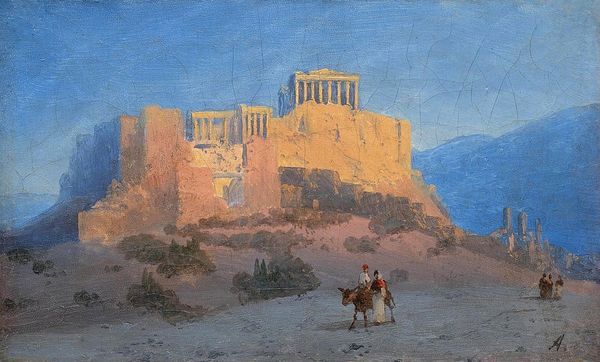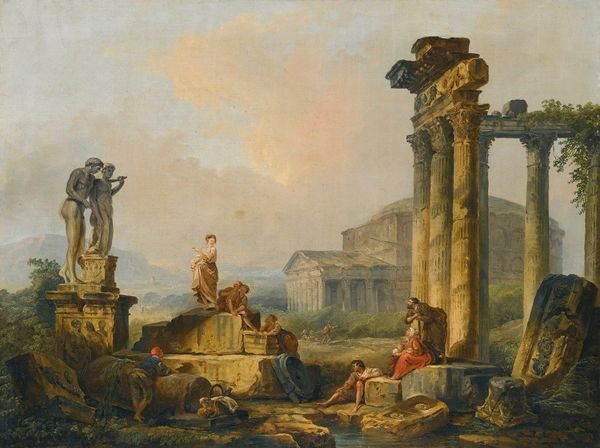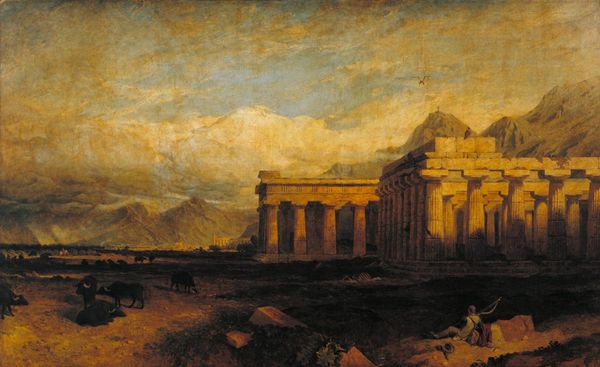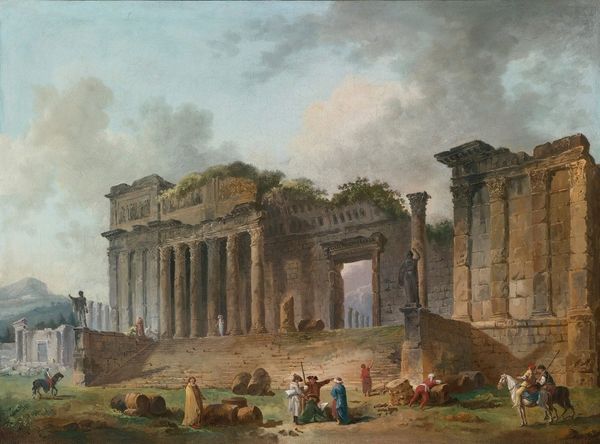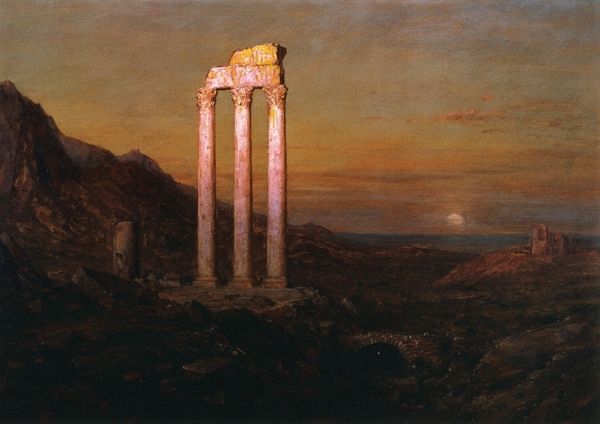
Copyright: Public domain
Editor: Take a look at Aivazovsky’s "The Acropolis of Athens," painted in 1883. The scene has such a wistful feel to it, almost dreamlike. How do you interpret its cultural context and what would have prompted its creation during the time? Curator: Well, it's interesting to see Aivazovsky, a Russian artist known for his seascapes, depicting the Acropolis. The 19th century saw a surge in philhellenism – a love and fascination with ancient Greece – across Europe. Painting classical ruins, like the Acropolis, wasn’t just about the scenery. It became a way to connect with the perceived origins of Western civilization. Consider, then, how such imagery served particular narratives within the political and cultural sphere, shaping views and validating the West’s perceived claim to classical heritage. Does that help? Editor: Absolutely, I never really considered that before; that it's not just documenting what's there, but also making a claim. Curator: Precisely. Think about it: who commissioned this piece? Where was it displayed? Who had access to these images? Understanding these aspects helps us unravel the art's intended public role and the political undertones present in this visual representation. Editor: It makes sense. And those travelers in the front really frame the building. The framing places the structure inside of its setting as opposed to being apart from it. Were those types of people, at that place and time, really even experiencing it this way? Curator: That's a crucial question. Aivazovsky is constructing a scene that may prioritize an ideal view rather than everyday lived experiences. What we see reflects constructed visions of cultural value and legacy. These are images invested in maintaining power relations between cultures through time. How has seeing its role through this lense altered your perspective? Editor: It’s no longer just a pretty picture of old buildings. There are levels of messages imbedded that influence the West’s place in cultural narratives, which really recontextualizes the picture. Thanks, I definitely have a lot to think about!
Comments
No comments
Be the first to comment and join the conversation on the ultimate creative platform.
